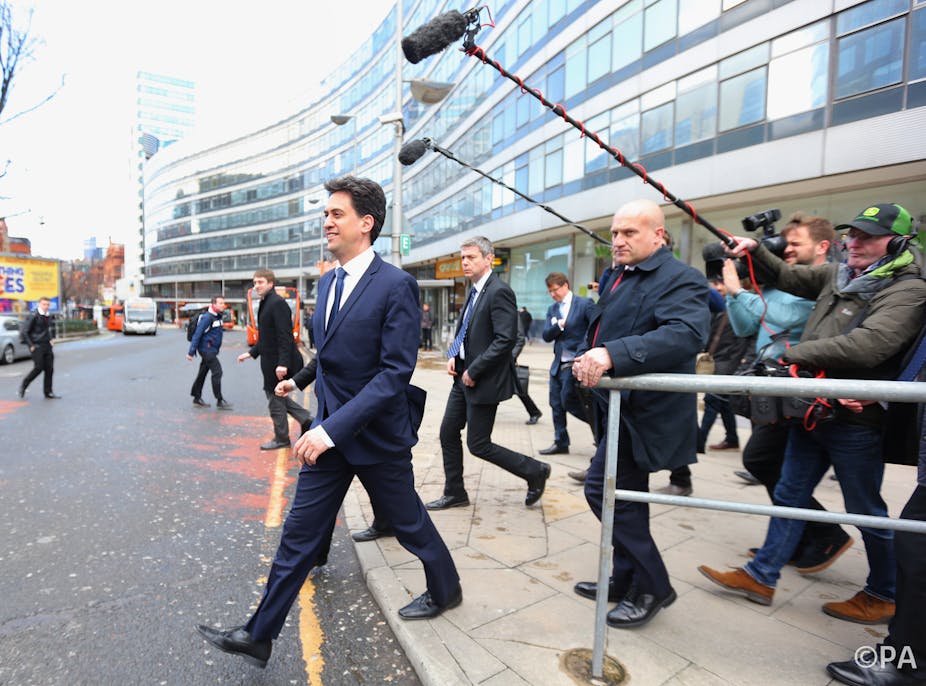After more than six months of unofficial campaigning, the three biggest parties have left the starting blocks in the race to Number 10.
The first exchanges showed that David Cameron and Ed Miliband were keen to start hostilities. And both the Tories and Labour opened the campaign by addressing their own Achilles’ heels.
Dave on the attack
For Cameron that meant talking about the NHS – a risky choice given that Labour traditionally owns the theme and many voters are still angry with hospital closures and the longer waiting lists to see GPs. Nonetheless, the Conservatives decided to address their vulnerability head-on by promising a seven-day-a-week health service. Perhaps the hope was that in making a bold promise on day one, they could avoid having to say anything else about the NHS for the rest of the campaign.
From now on, the Conservatives will focus on their strengths. With the figures on economic growth and employment on the rise, they will spend the next five weeks hammering out the simplistic but powerful message that the economy is safe in their hands and that a Labour government would bring chaos.
If this is not enough to win over undecided voters, the Conservative campaign will also focus on highlighting the personality differences between the two leaders. Cameron has already offered a taste of this by saying: “When it comes to who’s prime minister, the personal is national”. This statement then paved the way for a very personal attack against Miliband.
Cameron’s choice of words is shrewd. His personable and authoritative image is his party’s greatest electoral asset. So in the coming weeks, stories about Cameron’s prime-ministerial attributes will gain prominence. And so too will the attacks against the Labour leader.
Wobbly start for Ed
Miliband began his campaign in blitzkrieg style, doing his best to shrug off the attacks. But they do hurt and may have an effect on Labour’s electoral prospects. Given that personality and style are no-go areas for Labour, the party’s campaign is focusing on policy. But there are potholes in this road too.
Like Cameron, Miliband attempted to get the difficult bits out of the way as quickly as possible. He launched the campaign with a speech that aimed to highlight Labour’s pro-business credentials. Two days later, and in a move that had the fingerprints of Conservative Central Office all over it, 100 business leaders published a letter in the Telegraph claiming the Tories were the guardians of that community.
As Labour cannot win with business, it has moved to the safer ground of defending the NHS and addressing the cost of living crisis with promises to put an end to zero-hours contracts, raise the minimum wage and invest in housing.
Nick sets a different pace
In an attempt to look different, the embattled Liberal Democrat leader Nick Clegg chose the worthy but politically neutral cause of mental health to kick-start his electoral campaign. He then moved onto the classical liberal themes of civil liberties and family-friendly policies.

This is essentially the opposite tactic taken by Labour and the Tories. There will be no attempt to tackle the sticky issues first. By focusing on these well-meaning policy areas, the Liberal Democrats are trying to distance themselves from the record of the most toxic policies implemented by the coalition government. They are also trying to present the party as a moderating and responsible voice in British politics.
In an age of multi-party politics this strategy may not be the most exciting, but it may prove to be the safest. The electoral campaign is still in its early days and there are only so many slogans, personal attacks and policy proposals that voters can digest without getting dizzy. For this reason, the winner of this contest may not be the candidate with the deadliest tricks, but the one with the stamina to finish the race.

